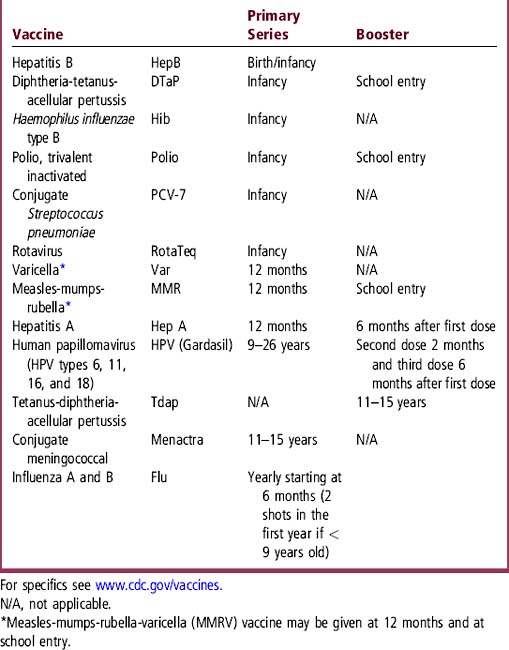Chapter 12 Immunization
What Immunizations Are Currently Recommended?
Immunization recommendations are reviewed and updated yearly, and new vaccines and combinations of vaccines are added with some regularity. Immunizations recommended in the United States are listed by the Centers for Disease Control and Prevention (www.cdc.gov/vaccines) and the American Academy of Pediatrics (www.aap.org/healthtopics/immunizations.cfm). Table 12-1 lists currently recommended vaccines. Each state sets its own standards for required immunizations. Table 12-2 lists sources of reliable information.
Table 12-2 Sources for Information on Immunizations
| Source | Citation or Web Site |
|---|---|
| Information for Parents | |
| American Academy of Pediatrics | www.aap.org/healthtopics/immunizations.cfm |
| CDC: “Parents: What You Need to Know” | www.cdc.gov/vaccines/spec-grps/parents.htm |
| Vaccine information | www.vaccineinformation.org |
| Healthcare Professionals | |
| American Academy of Pediatrics | Pickering LD, editor: Red book: 2006 report of the Committee on Infectious Diseases, ed 27, Elk Grove Village, IL, 2006, American Academy of Pediatrics. |
| CDC: Vaccine information statements | www.cdc.gov/vaccines/pubs/vis/default.htm |
| CDC: Immunization schedule | www.cdc.gov/vaccines/hcp.htm#sched |
| Immunization schedule | pda.immunizationed.org |
CDC, Centers for Disease Control and Prevention.
Only gold members can continue reading. Log In or Register to continue
Stay updated, free articles. Join our Telegram channel

Full access? Get Clinical Tree



